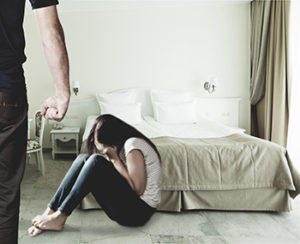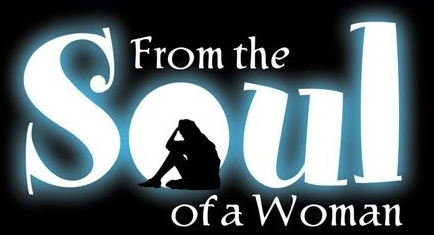Signs of Abuse and Abusive Relationships
 Domestic violence and abuse can happen to anyone, regardless of size, gender, or strength, yet the problem is often overlooked, excused, or denied. This is especially true when the abuse is psychological, rather than physical. Emotional abuse is often minimized, yet it can leave deep and lasting scars.
Domestic violence and abuse can happen to anyone, regardless of size, gender, or strength, yet the problem is often overlooked, excused, or denied. This is especially true when the abuse is psychological, rather than physical. Emotional abuse is often minimized, yet it can leave deep and lasting scars.
Noticing and acknowledging the warning signs and symptoms of domestic violence and abuse is the first step to ending it. No one should live in fear of the person they love. If you recognize yourself or someone you know in the following warning signs and descriptions of abuse, don’t hesitate to reach out. There is help available.
Women don’t have to live in fear, CALL:
In the U.S., call the National Domestic Violence Hotline at 1-800-799-7233 (SAFE).
UK: call Women’s Aid at 0808 2000 247.
Canada: National Domestic Violence Hotline at 1-800-363-9010.
Australia: National Domestic Violence Hotline 1800 200 526.
Or visit International Directory of Domestic Violence Agencies for a worldwide list of helplines, shelters, and crisis centers.
Male victims of abuse can call:
In the US, The Domestic Abuse Helpline for Men & Women specializes in supporting male victims of abuse and offers a 24-hour helpline: 1-888-7HELPLINE (1-888-743-5754).
UK: ManKind Initiative offers a national helpline at 01823 334244.
Australia: One in Three Campaign offers help and resources for male victims.
Domestic violence and abuse are used for one purpose and one purpose only: to gain and maintain total control over you. An abuser doesn’t “play fair.” Abusers use fear, guilt, shame, and intimidation to wear you down and keep you under his or her thumb. Your abuser may also threaten you, hurt you, or hurt those around you.
Domestic violence and abuse does not discriminate. It happens among heterosexual couples and in same-sex partnerships. It occurs within all age ranges, ethnic backgrounds, and economic levels. And while women are more commonly victimized, men are also abused—especially verbally and emotionally, although sometimes even physically as well. The bottom line is that abusive behavior is never acceptable, whether it’s coming from a man, a woman, a teenager, or an older adult. You deserve to feel valued, respected, and safe.
Recognizing abuse is the first step to getting help
Domestic abuse often escalates from threats and verbal abuse to violence. And while physical injury may be the most obvious danger, the emotional and psychological consequences of domestic abuse are also severe. Emotionally abusive relationships can destroy your self-worth, lead to anxiety and depression, and make you feel helpless and alone. No one should have to endure this kind of pain—and your first step to breaking free is recognizing that your situation is abusive. Once you acknowledge the reality of the abusive situation, then you can get the help you need.
Signs of an abusive relationship
 There are many signs of an abusive relationship. The most telling sign is fear of your partner. If you feel like you have to walk on eggshells around your partner—constantly watching what you say and do in order to avoid a blow-up—chances are your relationship is unhealthy and abusive. Other signs that you may be in an abusive relationship include a partner who belittles you or tries to control you, and feelings of self-loathing, helplessness, and desperation.
There are many signs of an abusive relationship. The most telling sign is fear of your partner. If you feel like you have to walk on eggshells around your partner—constantly watching what you say and do in order to avoid a blow-up—chances are your relationship is unhealthy and abusive. Other signs that you may be in an abusive relationship include a partner who belittles you or tries to control you, and feelings of self-loathing, helplessness, and desperation.
To determine whether your relationship is abusive, answer the questions below. The more “yes” answers, the more likely it is that you’re in an abusive relationship.
SIGNS THAT YOU’RE IN AN ABUSIVE RELATIONSHIP
Your Partner’s Belittling Behavior
Do you:
feel afraid of your partner much of the time?
avoid certain topics out of fear of angering your partner?
feel that you can’t do anything right for your partner?
believe that you deserve to be hurt or mistreated?
wonder if you’re the one who is crazy?
feel emotionally numb or helpless?
Does your partner:
humiliate or yell at you?
criticize you and put you down?
treat you so badly that you’re embarrassed for your friends or family to see?
ignore or put down your opinions or accomplishments?
blame you for their own abusive behavior?
see you as property or a sex object, rather than as a person?
Your Partner’s Violent Behavior or Threats Your Partner’s Controlling Behavior
Does your partner:
have a bad and unpredictable temper?
hurt you, or threaten to hurt or kill you?
threaten to take your children away or harm them?
threaten to commit suicide if you leave?
force you to have sex?
destroy your belongings?
Does your partner:
act excessively jealous and possessive?
control where you go or what you do?
keep you from seeing your friends or family?
limit your access to money, the phone, or the car?
constantly check up on you?
Physical abuse and domestic violence
When people talk about domestic violence, they are often referring to the physical abuse of a spouse or intimate partner. Physical abuse is the use of physical force against someone in a way that injures or endangers that person. Physical assault or battering is a crime, whether it occurs inside or outside of the family. The police have the power and authority to protect you from physical attack.
Sexual abuse is a form of physical abuse
Any situation in which you are forced to participate in unwanted, unsafe, or degrading sexual activity is sexual abuse. Forced sex, even by a spouse or intimate partner with whom you also have consensual sex, is an act of aggression and violence. Furthermore, people whose partners abuse them physically and sexually are at a higher risk of being seriously injured or killed.
It Is Still Abuse If . . .
The incidents of physical abuse seem minor when compared to those you have read about, seen on television or heard other women talk about. There isn’t a “better” or “worse” form of physical abuse; you can be severely injured as a result of being pushed, for example.
The incidents of physical abuse have only occurred one or two times in the relationship. Studies indicate that if your spouse/partner has injured you once, it is likely he will continue to physically assault you.
The physical assaults stopped when you became passive and gave up your right to express yourself as you desire, to move about freely and see others, and to make decisions. It is not a victory if you have to give up your rights as a person and a partner in exchange for not being assaulted!
There has not been any physical violence. Many women are emotionally and verbally assaulted. This can be as equally frightening and is often more confusing to try to understand.
Source: Breaking the Silence: a Handbook for Victims of Violence in Nebraska
SOURCE: https://helpguide.org/mental/domestic_violence_abuse_types_signs_causes_effects.htm
Safety when preparing to leave. Use some or all of the following strategies:
I will have money and an extra set of keys with ______________ so I can leave quickly.
I will keep copies of important documents at ________________________________.
I will open a savings account by __________________ to increase my independence.
Other thinks I can do to increase my independence include: ____________________________________
I will keep change for phone calls or purchase a phone card.
I will leave extra clothes with ________________________.
I will rehearse my exit plan and, as appropriate, practice it with my children.
I can call a domestic violence hotline (numbers listed below) or Women Against Abuse Legal Center (215) 686-7082 to talk about getting a protection from abuse order.
Important documents
I need to set outside the house in a safe place for when I leave are:
- Personal ID for myself
- Birth Certificates (mine/kids)
- Social Security Cards/Numbers
- Money
- Checkbook, ATM cards, bank account numbers
- Credit Card numbers
- Pictures of myself, my kids and my partner
- Pay stubs, income tax returns
- Insurance policies
- Access card
- Passport/Green card
- Address book
- Keys
- Children’s toys/clothes
- Driver’s License/Registration
- Marriage License/Divorce papers
- Medications
- Any ownership papers
